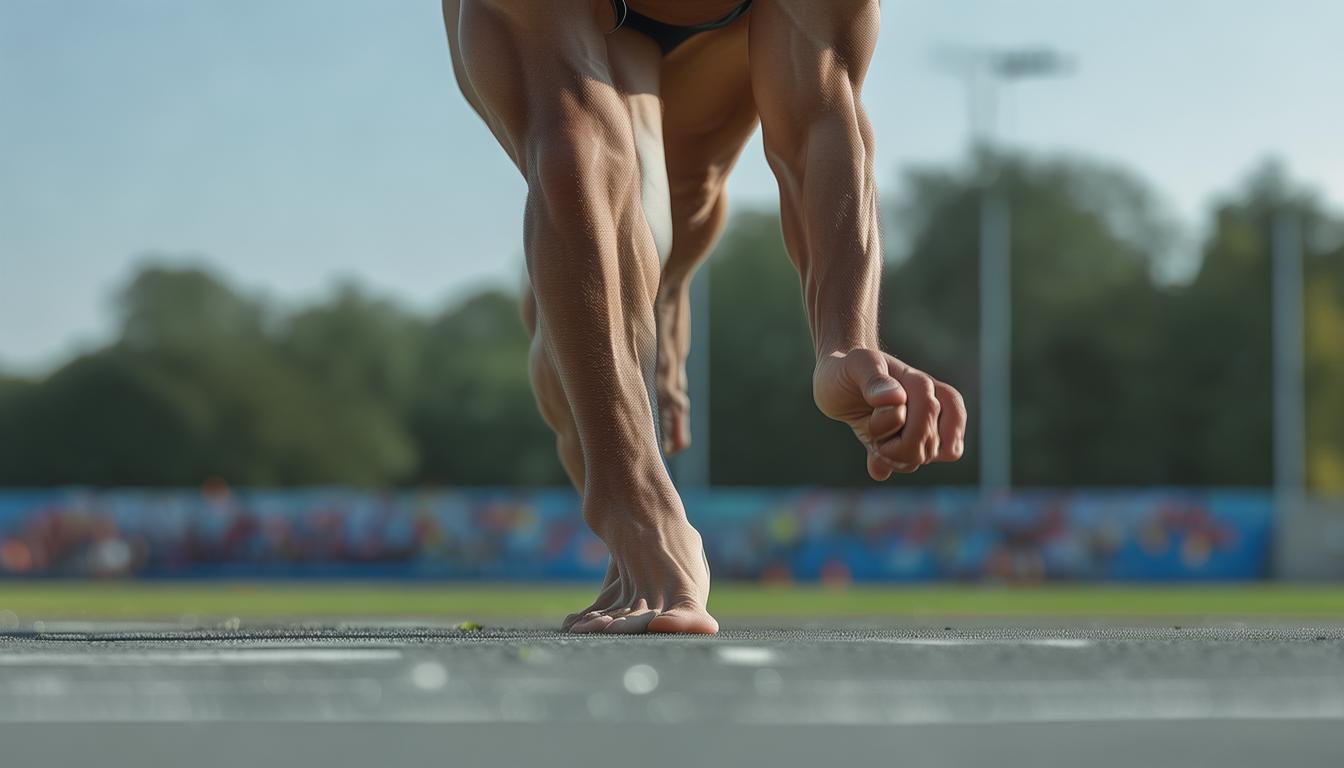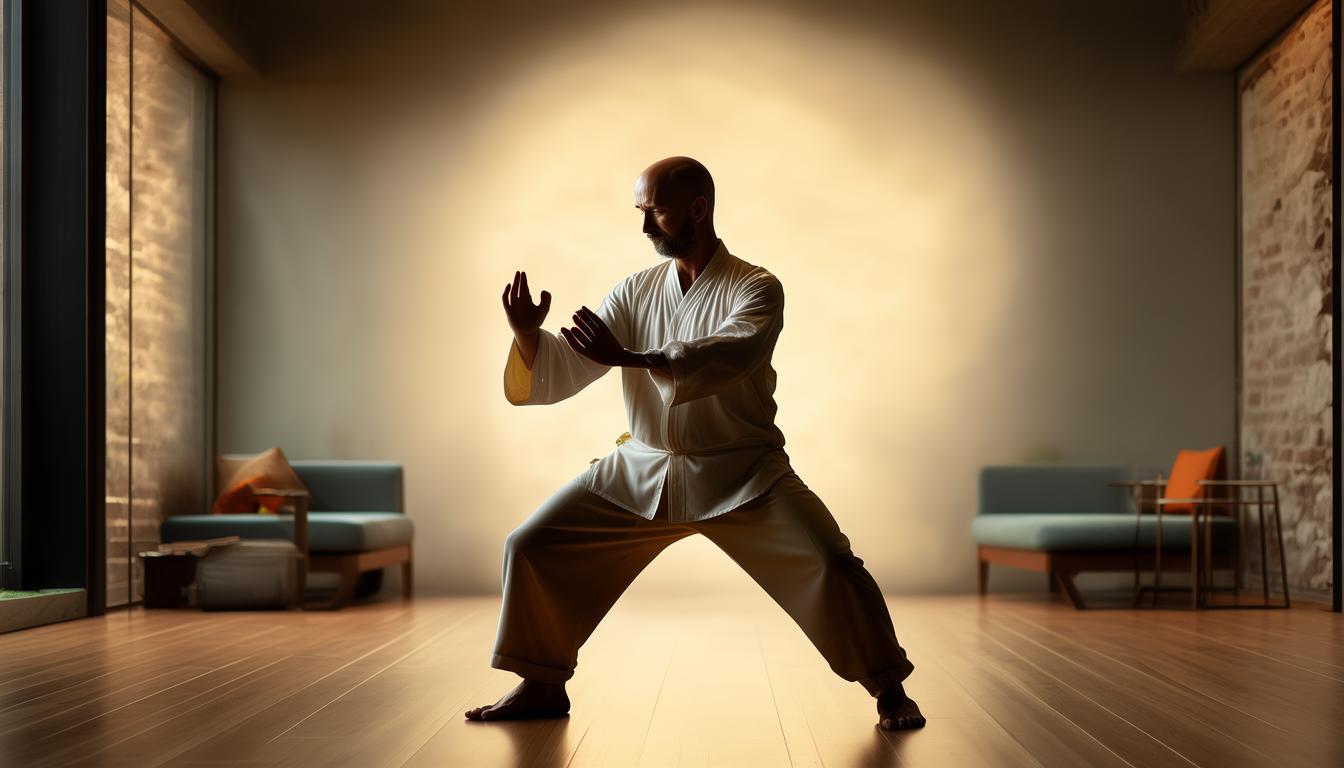The eight basic movements of Tai Chi are not complicated, but each move deeply reflects the philosophical thoughts of Tai Chi and the wisdom of fitness. For Tai Chi enthusiasts, these movements are ideal choices for beginners or daily exercises. By practicing Tai Chi, people can not only enhance their body coordination and flexibility, but also effectively regulate their breathing and mentality.
Starting momentum and adjusting breathing
When standing, spread your feet shoulder-width, and move your toes forward. Raise your arms slowly, and your palms face down. The body slowly lowers the center of gravity tai chi 8 form , bends your knees, and starts to squat down. During this process, gently press your arms down to the front of your abdomen, and move slowly and smoothly. This seemingly simple start is actually extremely critical. It is like the opening of a wonderful performance, leading us into a journey of harmonious coexistence between body and mind and nature. It allows us to find peace in the hustle and bustle, helps us adjust our breathing, and lays the foundation for practicing entering the gate of Tai Chi.
When starting your movement, pay attention to the coordination of breathing and movements. Inhale when lifting your arms upwards and exhale when falling. Feel the breath flowing slowly in the body, like a tiny stream of water, gentle and quiet. The line of sight should be straight forward, and the whole body should be in a straight and comfortable posture, like a pine tree rooted deeply on the earth, standing there firmly, laying the foundation for the next movement.
Mustang mane
The body slightly tilted to the right, and the center of gravity gradually moved to the right leg Tai Chi Classes Online . At this time, the right arm was close to the chest, bent back and forth, with the palm facing down. Wave your left hand from front to lower right, place it under your right hand, with your palm facing up, and gradually approach your hands, showing a posture of holding the ball. Then, quickly move your left foot toward the inside of your right foot and gently tap the ground with your toes. Then, turn your body slightly to the left, take a step forward with your left foot, and hit the ground first. During this process, the body continues to lean to the left, the left foot is firmly on the ground, the left leg bent forward into a lunge, and the right leg maintains its original straightening state. At the same time, with the rotation of the body, the left and right arms slowly stretched to the upper left and lower right. The left hand and the line of sight remained at the same level, the palms were slightly tilted upwards, and the elbows were slightly bent; while the right hand was placed next to the right hip, with the palms facing down, and the fingertips forward.

The movement was like the wild horse's mane fluttering gently in the wind, both stretching and majestic. When practicing, pay attention to the coordination between body rotation and arm opening and closing. The hips must be rotated flexibly so that they can drive the continuous movements of the entire body. The symbolic significance of wild horse splitting is that in real life, we should run towards the vast world like wild horses, bravely explore and face all challenges with a broad mind.
White crane wings
The steps are slightly narrower, the body leans back slightly, the center of gravity is mainly concentrated on the right leg, first turning to the right, facing the front right, and then turning to the front left. The left foot gently moves forward, and at the same time, the hands meet in front of the chest, and the right palm draws an arc from the upper direction of the left palm and the upper direction of the right direction, with the palm facing downward, keeping the same horizontal line as the eyes; while the left palm draws an arc from the lower left, place it in front of the left hip, with the palm facing downward, and the fingertips facing forward.
This move is like a crane spreading its wings, with light movements and elegant postures. It is like we are in the quiet forest and witnessing the beautiful scene of white cranes dancing with our own eyes. When completing this movement, you must ensure your body's balance and stability. The knees are slightly bent and the waist is straight, as if there is a thin thread pulling on the top of the head. Such movements are conducive to improving the body's flexibility and sense of balance.
Hug Knee Step
Rotate outward with the right heel as the axis, and the body also turns to the right. At the same time, the left foot moves forward to form a left lunge. At this moment, the right hand starts from the front of the right shoulder, moves down along the abdomen, then turns to the front of the left knee, performs hugs, and then extends forward to maintain the same height as the tip of the nose; while the left hand starts from next to the left hip, lifts upwards, draws a circle to the front of the left, and finally stays above the left forehead, with the palm facing diagonally above. Immediately afterwards, Tai Chi Courses Online , take a step forward with your right foot and convert it to a right lunge. At this time, the left and right hands move in the opposite direction.

This action is like we solve problems in life, making careful adjustments to each step and continuing to move forward. When executing, you must pay attention to the coordination and cooperation of your limbs. When the front foot is stepped out, the rear foot must step on the ground with force. The movements of the arms should be controlled by the rhythm. When holding them tightly, they should be fast and powerful, and when pushing, they should be steady and firm.
Waving the pipa with your hands
Take half a step forward with your right foot, and then your body leans backward, and the center of gravity gradually falls on your right leg; your left foot gently off the ground, moves slightly forward, forming a virtual step, and gently tap the ground with your toes. During this process, the left hand extends from a high place forward and downward, placed above the left knee, with the palm facing downward; while the right hand retracts to the chest, with the palm facing left, and the fingertips forward.
The pipa dances like lifelike, as if a musician is playing gently. During the practice, the lightness and speed of the movements are very important. The body leans slightly backward to maintain balance without distortion. The movement of fingertips should be delicate and precise, just like gently touching the strings of the pipa. With such exercises, the flexibility of the wrist and forearm can be significantly enhanced.
What profound feelings do I have during the practice of the eight Tai Chi styles? What are the unique experiences? Friends who think this article is very interesting, don’t forget to like and share.



